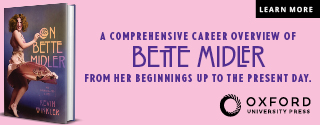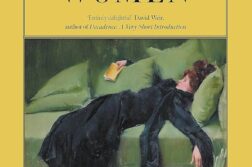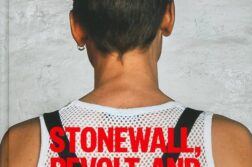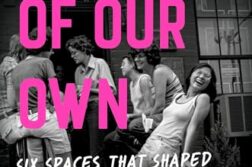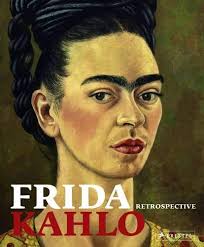 Frida Kahlo Retrospective
Frida Kahlo Retrospective
by Helga Prignitz-Poda, et al.
Prestel. 255 pages, $55.
PUBLISHED last year on the occasion of a major retrospective of Frida Kahlo’s work in the Martin- Gropius-Bau, Berlin, and Bank Austria Kunstforum, in Vienna, the Frida Kahlo Retrospective is accompanied by a coffee table-sized catalog. It is a stunningly beautiful book with glorious color and black-and-white illustrations. Helga Prignitz-Poda (who conceived the exhibition) has brought together a collection of fourteen anecdotal, biographical, and academic essays that further enhance the catalog.
When Kahlo died in 1954, her funeral procession became the grand spectacle that returned Diego Rivera to the fold of communism and fulfilled her last wish for him to reunite with the party. Ironically, Kahlo’s last journey mirrors her life as a sacrificial lamb to Diego’s immense ego. Further, it recapitulates the complexly entwined history of their life together.
Kahlo’s near-fatal traffic accident in 1925 at age eighteen became the frame that defined her life. Medical reports detailed in the book indicate that the accident fractured both her third and fourth lumbar vertebrae, caused three fractures to the pelvis and eleven to the right foot, a luxation of the left elbow, and a penetrating wound to the abdomen produced by an iron pipe that entered the left hip and exited through the genitalia. Afterward, Kahlo lived in the space of death. In fact, her work is a tribute to how one human being overcame a horrendous calamity to grab ahold of life and shake it for everything it was worth.
Echoing Oscar Wilde’s Harry in The Picture of Dorian Gray, Kahlo believed: “To become the spectator of one’s own life is to escape the suffering of life.” Three years before her death, while recovering from yet another operation (she had over 32), confined to a wheelchair, and suffering the effects of spina bifida, she could still write: “I am eager to live.” Since her death in 1954, Kahlo has become a cult figure, and her reputation now outshines that of her husband, muralist Diego Rivera. For Kahlo, the space of death became a space of life. It is this message that continues to resonate for so many of her admirers.
Kahlo and Diego were married in 1929 and divorced in 1940, but they never truly separated as soul mates. Her work is largely autobiographical, focusing almost exclusively on her conflicting identities, Mexican and European, and her obsessive relationship with Diego. Art historians have compared her to Henri Rousseau, and others have claimed her for Surrealism. Even so, she is none of these and remains unique. Kahlo’s oscillating moods flow across the canvas, bleeding out in a series of stunningly painful revelations. An ever-present ambiguous territory of desire grips the viewer’s eyes, and waves of pain and ecstasy shoot out from her canvases.
Kahlo claimed she needed to paint because she felt “murdered by life.” She began to paint while convalescing at home and bored out of her mind. Art historian Hayden Herrera notes the dualities in Kahlo’s work: life and death, night and day, sun and moon, male and female. Prignitz-Poda follows up on Herrera’s work using the catalogue as a vehicle to develop her own theory about Kahlo’s fluid sexuality, and finally to reclaim her as heterosexual. The reasons for this claim escape me. The truth is that Kahlo was passionately bisexual and had affairs with both men and women throughout her turbulent marriage to Diego. Remarking on their marriage, she once commented that she did not think it hurt the banks of a river to let the water run. Nonetheless, her self-portraits bear witness to her suffering over Rivera’s many infidelities, including the one with her sister Cristina. She embodied this in her 1935 painting A Few Small Nips, in which she depicts herself as a sacrificial victim. This image can be taken as emblematic of their troubled relationship.
Among the most interesting essays is Arnoldo Kraus’ “Pain as Life,” which maps the course of Kahlo’s lifelong struggle with physical pain. Art and illness are inexorably linked in her work. Francisco Reyes-Palma’s article, “A Gift-Wrapped Anti-Stalinist Bomb,” describes her relationship with Leo Trotsky and communism. Kahlo is thought to have had an affair with Trotsky.
This sumptuous book is further augmented by a section of photographs of Kahlo and an essay on her drawings by Prignitz-Poda. I think the impression of her work that remains with me is captured by what Diego said about her work in the late 1930’s: “Acid and tender, hard as steel and delicate and fine as a butterfly’s wing, adorable as a beautiful smile and as profound and cruel as the bitterness of life.” Her work remains all these things and so much more, as this exhibition and book demonstrate.
Cassandra Langer is a freelance writer based in New York City.
